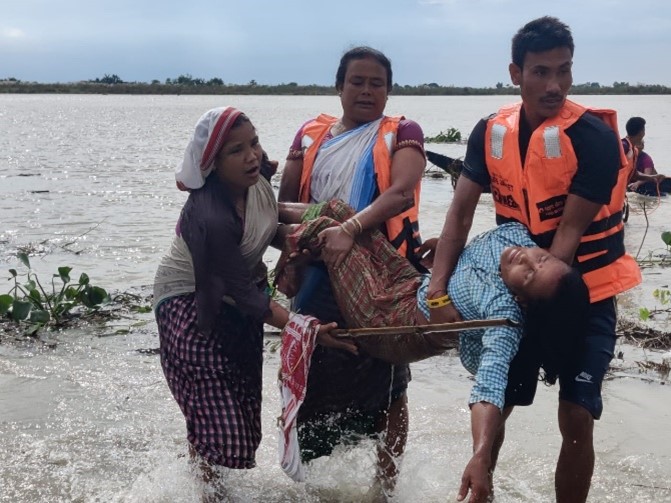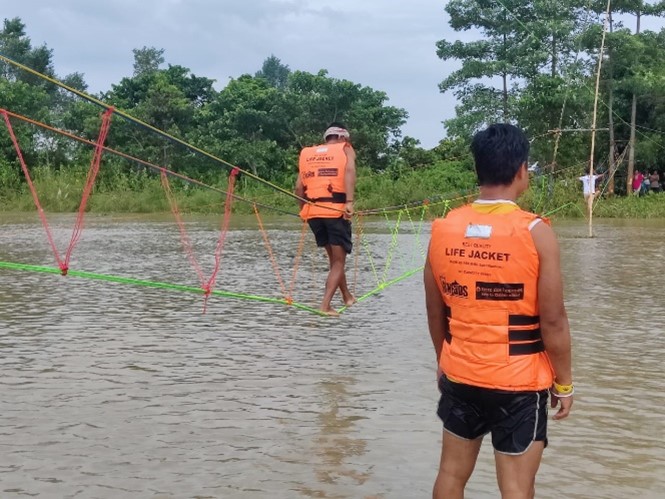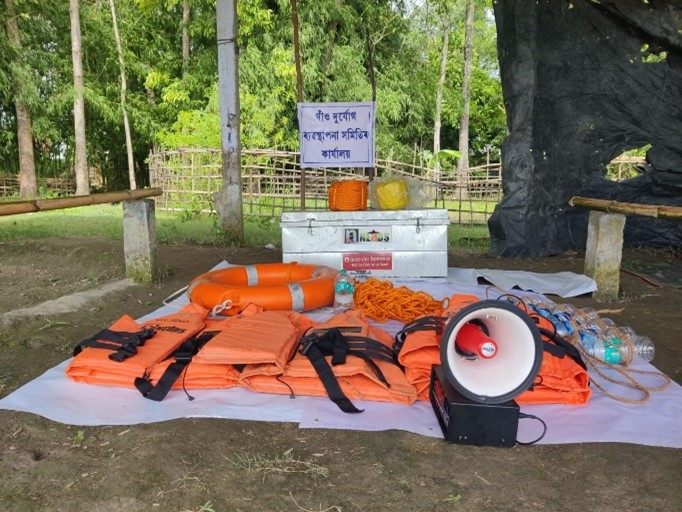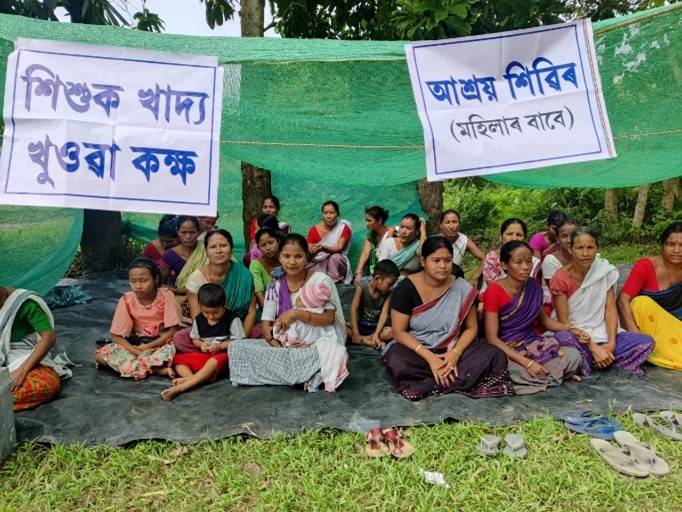Village Disaster Response Force (VDRF)

Strengthening Disaster Preparedness in Flood-Affected Assam


In the flood-prone communities of Assam, the Village Disaster Response Force (VDRF) emerges as a transformative community-based innovation and practice for disaster preparedness. Developed and conceptualised by NEADS, the VDRF empowers affected villages to proactively mitigate the impact of disasters, particularly floods, through localized response and preparedness efforts.
Initiative of North-East Affected Area Development Society (NEADS)
NEADS, a member of India Humanitarian Hub (IHH) has led an impactful initiative in the affected communities by establishing the Village Disaster Response Force (VDRF), a community-based programme aimed at enhancing disaster preparedness in a number of flood-affected villages of the districts including Jorhat, Majuli, Golaghat and Nagaon of the state. This initiative focuses on training local volunteers to respond effectively to disasters, particularly floods, through early warning dissemination, search and rescue efforts, evacuation planning, and post-disaster relief efforts. NEADS VDRF initiative emphasizes community empowerment, building resilience and promoting sustainable disaster response strategies to the specific needs of Assam’s flood-prone communities. Through active engagement and capacity-building, NEADS is instrumental in strengthening local resilience in disaster management.
Background: Addressing Disaster Risks in Assam
The state Assam faces significant challenges due to annual floods that devastate communities, causing displacement, loss of lives, and damage to infrastructure. In response to these recurring disasters, the VDRF has been established as a grassroots initiative to enhance community resilience and preparedness.
The Key Components of VDRF
- Local Volunteer Identification and Training: VDRF recruits and trains local volunteers from within the community. Volunteers undergo specialized training in disaster response, first aid, search and rescue techniques and early warning systems.
- Early Warning Dissemination and Evacuation Preparedness: VDRF members play a critical role in disseminating early warnings and organizing timely evacuations during flood events. They are familiar with local evacuation routes and safe assembly points.
- Post-Flood Relief and Recovery: After a flood, VDRF members engage in post-disaster assessments and relief operations. They assist in distributing emergency supplies, providing first aid, and supporting community recovery efforts.
- Community Engagement & Awareness: VDRF conducts outreach programs, workshops, and mock drills to enhance community understanding of disaster risks and preparedness measures. Community participation in planning and decision-making is emphasized.
Benefits of VDRF
- Enhanced Disaster Response: VDRF strengthens the capacity of communities to respond effectively to flood disasters, reducing loss of life and property.
- Community Empowerment: Involving local volunteers fosters a sense of ownership and responsibility for disaster preparedness and response.
- Improved Coordination: VDRF facilitates coordination between local stakeholders, authorities, and organizations, enhancing overall disaster management efforts.
- Adaptive & Sustainable Approach: VDRF leverages local resources and knowledge, promoting adaptive and sustainable disaster preparedness practices.


Conclusion: The Village Disaster Response Force (VDRF) represents a paradigm shift in disaster preparedness and response in a flood-affected state like Assam. By empowering communities through training, engagement, and proactive measures, VDRF strengthens resilience and reduces vulnerabilities to recurrent disasters. This community-based approach underscores the importance of local participation and cooperation in building safer and more resilient communities in the face of evolving climate challenges. As the Assam continues to confront environmental risks, initiatives like VDRF demonstrate the potential of community-driven solutions for disaster management and adaptation.
